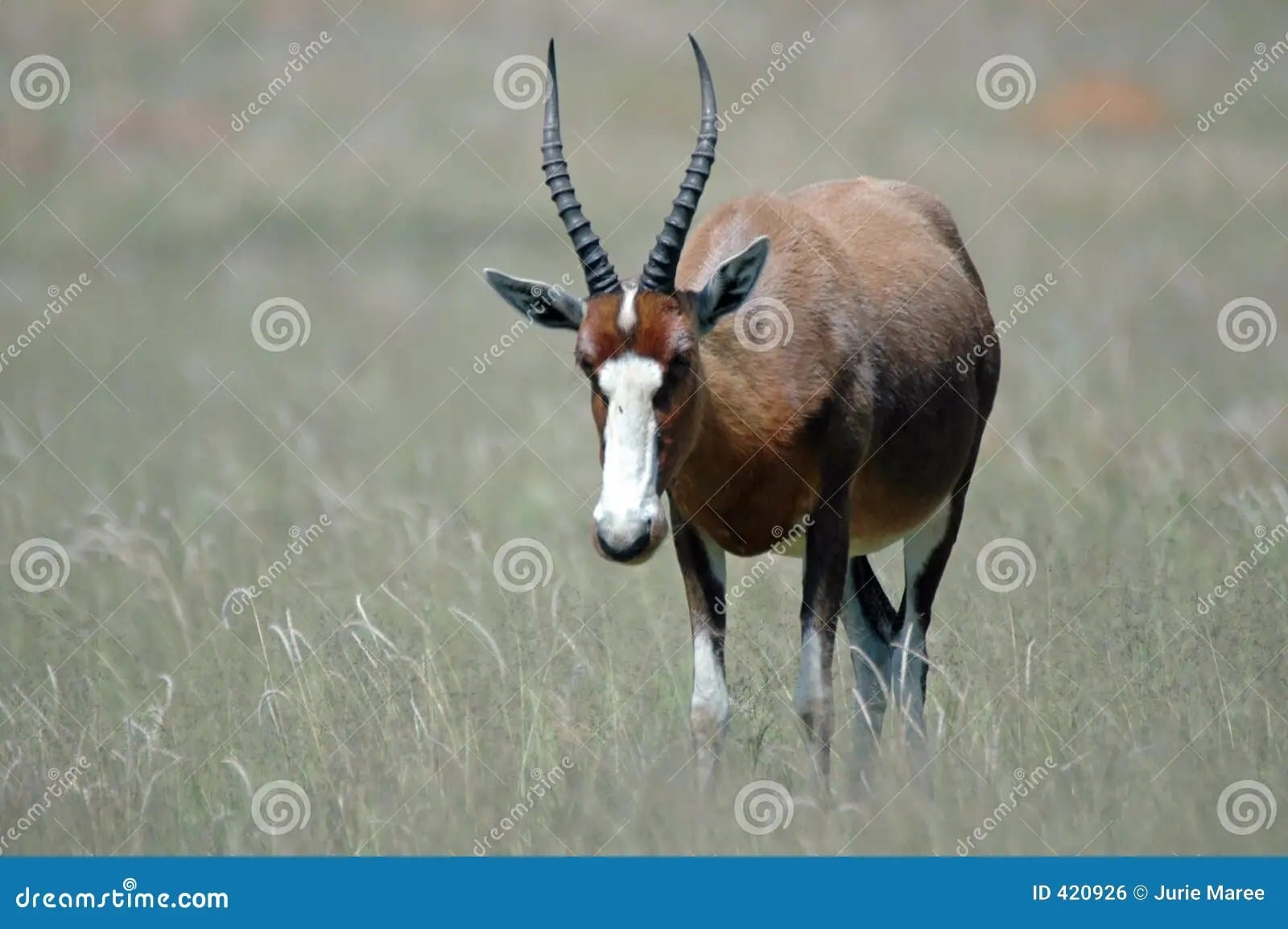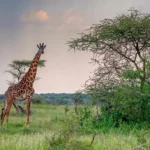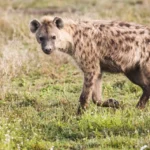Journey to the Southern African grasslands and encounter the blesbok and bontebok, two magnificent antelopes often mistaken for one another. While visually similar, these animals possess distinct characteristics and evolutionary paths. Let’s delve into their world, uncovering what makes each unique and exploring the conservation efforts protecting their future.
Unmasking the Blesbok: A Striking Antelope of the Grasslands
Imagine yourself on safari, the sun warming your face as you scan the vast expanse of the African savanna. A herd of graceful antelopes catches your eye. These are likely blesbok, captivating creatures with a compelling story.
True to their name, derived from the Afrikaans word “bles” meaning “blaze,” blesbok sport a distinctive white marking on their faces resembling a splash of paint stretching above their eyes. This prominent feature distinguishes them from their close relatives, the bontebok, who display a white patch on their rump. Adding to their visual appeal, blesbok boast a rich, chocolate-brown coat, often with a subtle purple undertone, that shimmers under the African sun.
Both male and female blesbok possess elegant, lyre-shaped horns, though the males’ horns tend to be longer and more dramatically curved. These magnificent creatures favor lush, well-watered grasslands, known as the highveld or savanna, where they graze on short grasses and occasionally browse on shrubs.
Blesbok are highly social animals, congregating in herds that can range in size from a handful to several hundred individuals. Within these herds, a clear social hierarchy exists, with dominant males vying for status and breeding opportunities.
Historically hunted to near extinction in the 19th century for their pelts, blesbok have made a remarkable comeback thanks to dedicated conservation efforts. Today, they are categorized as a species of Least Concern by the International Union for Conservation of Nature (IUCN), indicating a relatively healthy and widespread population. However, threats such as habitat loss due to human encroachment and the ever-present risk of poaching necessitate ongoing vigilance.
Is Blesbok Meat Good?
Many people are curious about the culinary experience of blesbok meat. Those who have tried it often describe it as delicious, drawing comparisons to venison but with a richer, slightly gamier flavor profile. This unique taste is attributed to the blesbok’s diet and active lifestyle in its natural habitat.
Beyond its taste, blesbok meat is gaining recognition as a sustainable and ethical protein source. In South Africa, where blesbok farming is practiced, many farmers prioritize responsible animal husbandry, ensuring humane treatment and sustainable practices. Choosing blesbok meat can align with the values of conscious consumers seeking environmentally friendly options.
Preparing blesbok meat, like any game meat, requires specific techniques to optimize its flavor and tenderness. Marinating is a popular method to infuse flavor and tenderize the meat, while grilling, roasting, and braising are common cooking approaches. Experimenting with various seasonings and herbs can further enhance the culinary experience.
For those interested in sourcing blesbok meat, it is readily available in South Africa, often found at local butcher shops or through online retailers specializing in game meat. Hunting blesbok is another option for enthusiasts, though it requires proper research, permits, and adherence to hunting regulations.
Unraveling the Name: What is a Blesbok Called in English?
You might be surprised to learn that the English name for a blesbok is, quite simply, “blesbok.” The name, originating from the Afrikaans and Dutch word “bles” meaning “blaze” or “white mark,” directly references the antelope’s most striking feature—the prominent white blaze adorning its face. While “blesbuck” is also used, both variations are considered correct and are used interchangeably.
Blesbok vs. Springbok: Beyond the Blaze
While both the blesbok and the springbok captivate observers with their agility and grace, mistaking one for the other is a common oversight. Distinguishing these fascinating creatures requires a keen eye for subtle yet significant differences.
Size and Build: The blesbok, notably larger, sports a robust build compared to the springbok’s more slender frame. This size difference reflects their evolutionary adaptation to distinct ecological niches within the Southern African landscape.
Coat Color and Markings: While both species display a white facial blaze, the blesbok’s blaze extends boldly above the eyes, while the springbok’s stops just below. The blesbok boasts a rich, reddish-brown coat, whereas the springbok sports a lighter brown hue, often with a distinctive dark brown band running along its flanks.
Tail Tales: Believe it or not, the tails of these antelopes offer a surprising clue for identification. A closer look reveals that the blesbok possesses a pale tip on its tail, setting it apart from the springbok’s entirely dark tail.
Behavioral Cues: The springbok’s renowned “pronking” behavior, characterized by energetic vertical leaps, stands in contrast to the blesbok’s more grounded movements. These behavioral differences likely evolved as anti-predator strategies, reflecting the varying landscapes they inhabit.
Habitat Preferences: Habitat preference offers a crucial distinction. The blesbok prefers lush, well-watered grasslands, whereas the springbok demonstrates remarkable adaptability, thriving in harsher, drier regions across Southern Africa. These preferences highlight their evolutionary divergence, shaping their physical and behavioral adaptations.
Conservation Success: Both species currently hold a Least Concern status according to the IUCN, but their paths to conservation success differ. The blesbok, once on the brink of extinction due to overhunting, has rebounded thanks to rigorous conservation efforts. The springbok, with its larger population and wider distribution, has faced fewer historical threats.
Bontebok Connection: Adding another layer to the antelope puzzle, the blesbok is a subspecies of the bontebok, a close relative with a penchant for fynbos and coastal areas. Both can interbreed, producing fertile offspring known as “bontebles” or “baster blesbok.”
By closely observing these subtle differences, you’ll gain a deeper appreciation for the unique characteristics of both the blesbok and the springbok. These fascinating creatures exemplify the incredible biodiversity of Southern Africa, reminding us of the importance of understanding and protecting these precious ecosystems.
- Unveiling Bernhard Caesar Einstein’s Scientific Achievements: A Legacy in Engineering - July 15, 2025
- Uncover who is Jerry McSorley: CEO, Family Man, Business Success Story - July 15, 2025
- Discover Bernhard Caesar Einstein’s Scientific Contributions: Unveiling a Legacy Beyond Einstein - July 15, 2025
















1 thought on “The Blesbuck and Bontebok Dilemma: Untangling the Tale of Two Closely Related Antelopes”
Comments are closed.